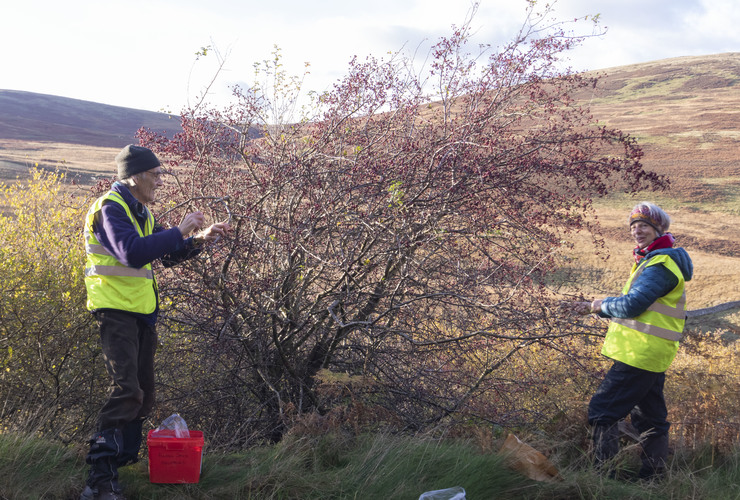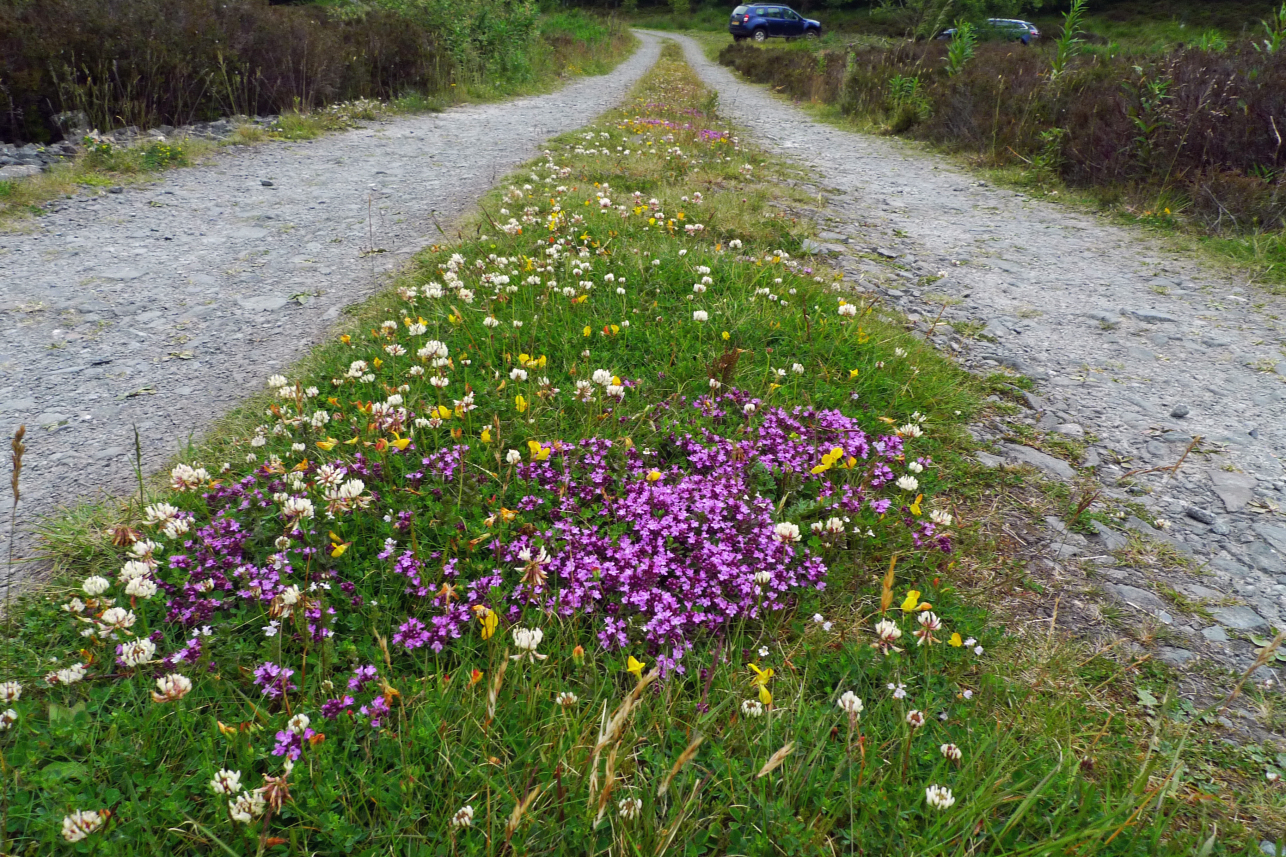Field Notes: Forest days on Glenlude Hill
Enid Forsyth shares the joy she gets from being a regular conservation volunteer at Glenlude in the Scottish Borders.

The dark envelopes me as I wake. It is 6.30am and Thursday; I’m off down Morningside Road on the great escape. Glorious free flow on the way out.
I punch the air as I cross the 'Welcome to Scottish Borders' sign. Twenty four miles on, rocks and willows roll by and then a steady rise until Glenlude Hill comes in to view.
Emotion washes over me. Joy at seeing the developing groves of native species reclaiming the land from an over abundance of monobloc spruce and larch. It reminds me of alpine meadows where light and pasture dance between the small stands of trees.
A year ago, exactly, we were planting aspens on the first day of the autumn lockdown. But a year on I am brashing (slicing off) Sitka side branches - up to about 6 ft from the ground - to reduce wind resistance as winter gales funnel up the rows of trees. This will be amplified by the removal of all the larch sisters which butt on to the Sitka stands due to Phytophthora ramorum - the larch disease that is decimating woodland all across the UK and further afield. I feel sad as I have been close to larches all my life. Ever since I transplanted a wee sapling to the base of an old beech stump behind the house. As I grew, it grew. And of course, it overtook me. Gloriously so.
The saw, saw movement of removing the branches is rhythmic and sensuous and the scent of the bared spruce wood is like an outdoor aromatherapy session. But better. I can see, touch smell and hear the trees. Taste too if I’m daft enough.
Physical forest work is better than any gym session. Good forest management of the remaining blocs of commercial forest will see them harvested at the right time and the proceeds re-invested on the land for the future. A future where biodiversity can thrive and heal the land for all species.
In the afternoon, I am releasing very hard-to-see seeds from mashed-up rowans in the tree nursery. This is neck breaking work as I bend over the mash and peer and peer for the tiny seeds. But being in the polytunnel is always great. It has its own micro climate and collection of other living beings: insects in high summer, mice in winter and of course baby trees. Lots of them. By 4pm I’ve managed to isolate a small posse of rowan seeds which get planted in damp sand. Fingers crossed they germinate next spring.
It’s the end of the day and it is time to knock off, disinfect the boots (because of the larch disease) and head off back up the road to Edinburgh. I get in the car well aware that the endorphins have kicked in.
As the gate clunks open, I hear them and look up. Eleven ravens crossing over from Paddy Slack’s. They’re right above my head now, kronking in celebration of their aerobatics. One pair tumbling. Tumbling and tumbling. What fun to be serenaded as I leave.
I’m home now. The hall is strewn with spruce needles as I dump my backpack and hang up my jacket. Well exercised and happy. Good-bye forest until next week.
- Find out more about volunteering oportunities at Glenlude.
- Read more of Enid's writing in our Wild Moments section and find out how to submit your own Wild Moment.
Photo shows Enid and fellow volunteer John gathering tree seed at Glenlude, by Susan Allan.


